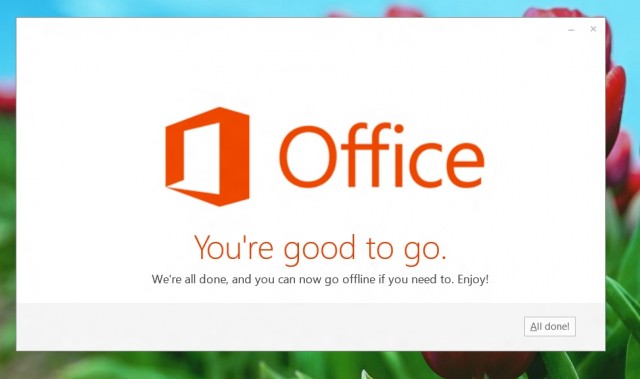Microsoft CEO Steve Ballmer announced on Monday that Office 2013 was “designed from the get-go to be offered as a service.” This caused a bit of confusion among those uninitiated in Microsoft’s approach to “application streaming.” As we discussed in our Office 2013 feature, the suite is tied to the cloud for license tracking, cloud storage, and software updates. But it runs completely from the desktop, which doesn’t match some people’s definition of “streaming.”
The Office 2013 installer is based on Microsoft’s App-V application virtualization technology, including what Microsoft calls “user experience virtualization.” While the Office applications run within Windows and not on some remote machine (as people typically think of application virtualization), they are connected through a Microsoft Office Click-to-Run component (integratedoffice.exe). The downloaded applications are essentially a local cache of functionality piped in from Microsoft's Office365 cloud service; they can run alongside an existing Windows installation without conflict.
Microsoft initially introduced Click-to-Run as an option for Office 2010—through the Professional Plus program of the Office 365 cloud service, as an option for Microsoft Office Home and Student 2010, and for Microsoft Office Home and Business 2010 (when they are downloaded instead of store-purchased), and the Microsoft Office Starter 2010 free trialware. In Office 2010, Click-to-Run used a mapping to a separate virtual file system stored in a "bubble" within the Windows file space; it doesn't use a separate filespace in Office 2013 (at least on Windows 8).
When the 400-kilobyte “Click-to-Run” installer gets downloaded and launched by an Office user from an Office 365 site, it plays an opening video. (This is mostly to buy time for the installer to start pulling down Office components). By the time the install gets past initial user configuration, most of the suite is already functional—but features are still being downloaded in background.

The user experience virtualization piece is attached to the user’s Office account login; things like dictionary files and other preferences (and the user’s SkyDrive or SharePoint file stores) are up in the cloud. When the user is authenticated on an Office instance (regardless of whether they installed it), it brings in their personalized settings, including their connection to cloud storage and “recent documents” menu.
Streaming also comes into play with software updates. While Office will run without any problem disconnected from the Internet, it checks back in with Microsoft’s cloud service when it does connect for new components. It will upgrade or patch in the background without the user having to intervene.
reader comments
32